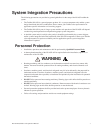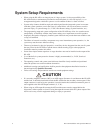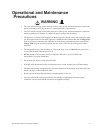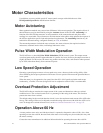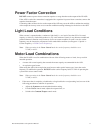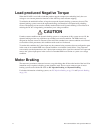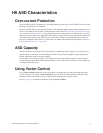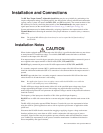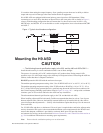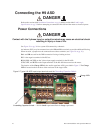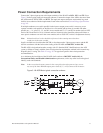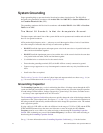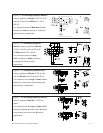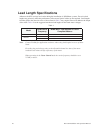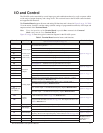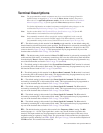
H9 ASD Installation and Operation Manual 15
Use caution when setting the output frequency. Over speeding a motor decreases its ability to deliver
torque and may result in damage to the motor and/or the driven equipment.
Not all H9 ASDs are equipped with internal primary power input fuses (HP dependent). When
connecting two or more drives that have no internal fuse to the same power line as shown in
Figure 1,
select a circuit-breaking configuration that will ensure that if a short circuit occurs in ASD 1, only
MCCB2 trips, not MCCB1. If it is not feasible to use this configuration, insert a fuse between MCCB2
and ASD 1.
Mounting the H9 ASD
— The following thermal specifications apply to the 230- and the 460-volt ASDs ONLY —
Install the unit securely in a well ventilated area that is out of direct sunlight.
The process of converting AC to DC, and then back to AC produces heat. During normal ASD
operation, up to 5% of the input energy to the ASD may be dissipated as heat. If installing the ASD in a
cabinet, ensure that there is adequate ventilation.
DO NOT operate the H9 ASD with the enclosure door open.
The ambient operating temperature rating of the 3.0 to 20 HP H9 ASD is 14° to 104° F (-10° to 40° C).
The ambient operating temperature rating of the 25 HP and above H9 ASDs is 14° to 122° F (-10° to
50° C). If the ASD is being operated above its specified range derate the ASD and in accordance with
the Carrier Frequency/Derating specifications listed in Figure 31 on pg. 190 — and provide a minimum
clearance space of 20 cm above and below the ASD from any obstruction.
The aforementioned thermal specifications apply to the 230- and the 460-volt ASDs.
When installing adjacent ASDs horizontally Toshiba recommends that there be at least 5 cm of space
between adjacent units. However, horizontally mounted ASDs may be installed side-by-side with no
space in between the adjacent units — Side-by-side installations require that the top cover be removed
from each ASD.
For 150 HP ASDs and above, a minimum of 50 cm of space is required above and below adjacent units
and any obstruction.This space is the recommended minimum space requirement for the H9 ASD and
ensures that adequate ventilation is provided for each unit. More space will provide a better
environment for cooling (see the section titled Enclosure Dimensions and Conduit Plate Information on
pg. 256 for additional information on mounting space requirements).
Note: Ensure that the ventilation openings are not obstructed.
Figure 1. Typical circuit breaker configuration.
CAUTION



